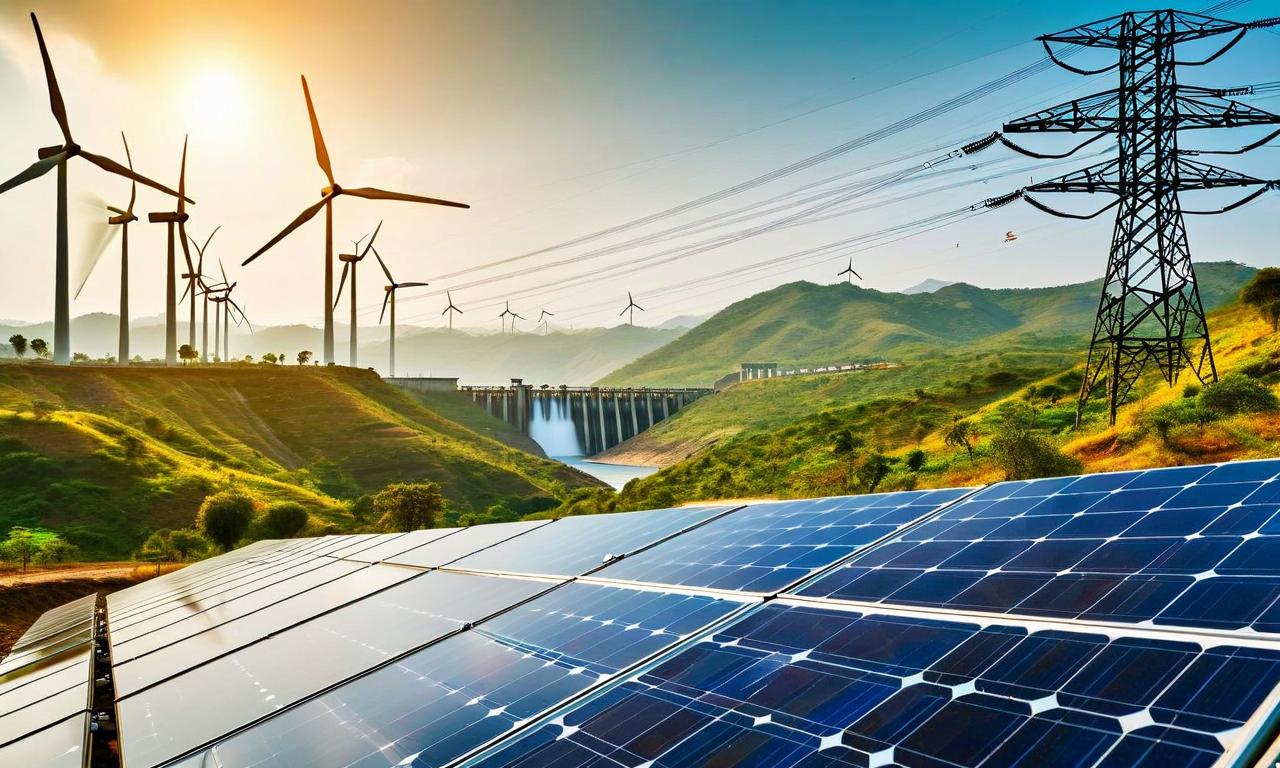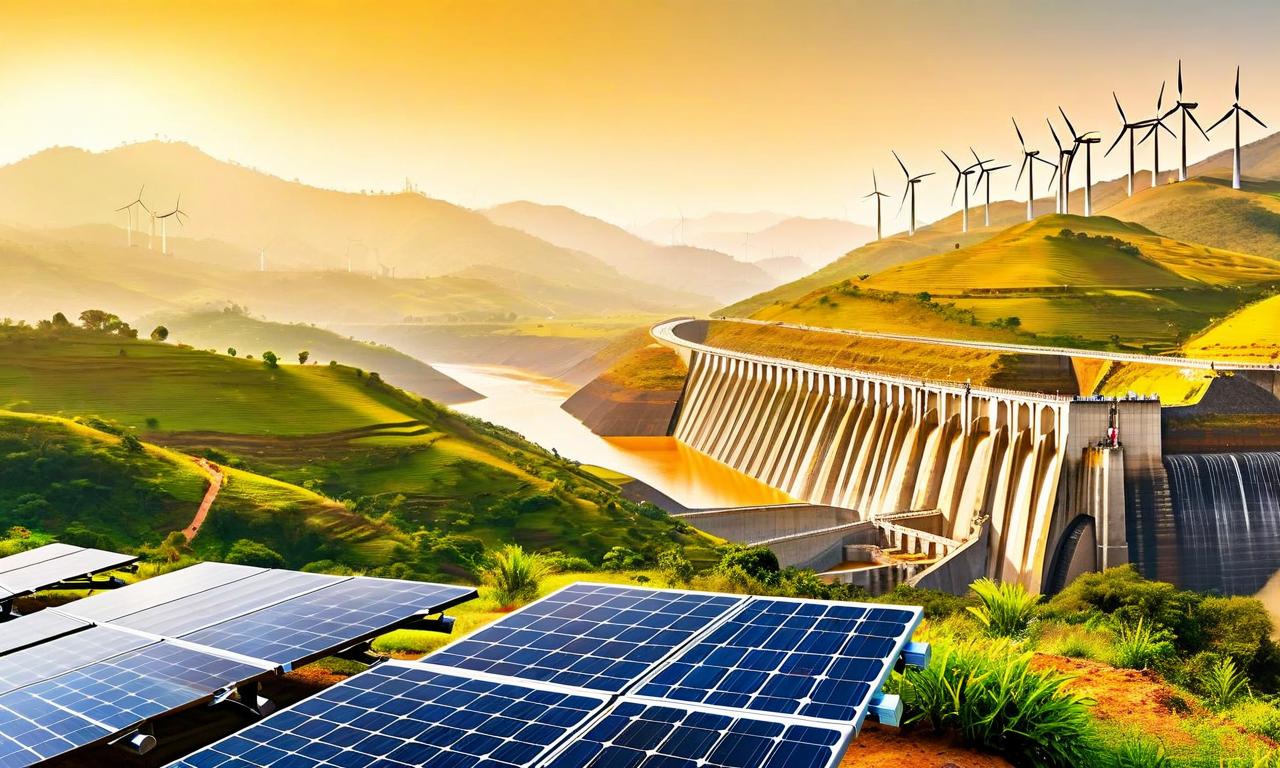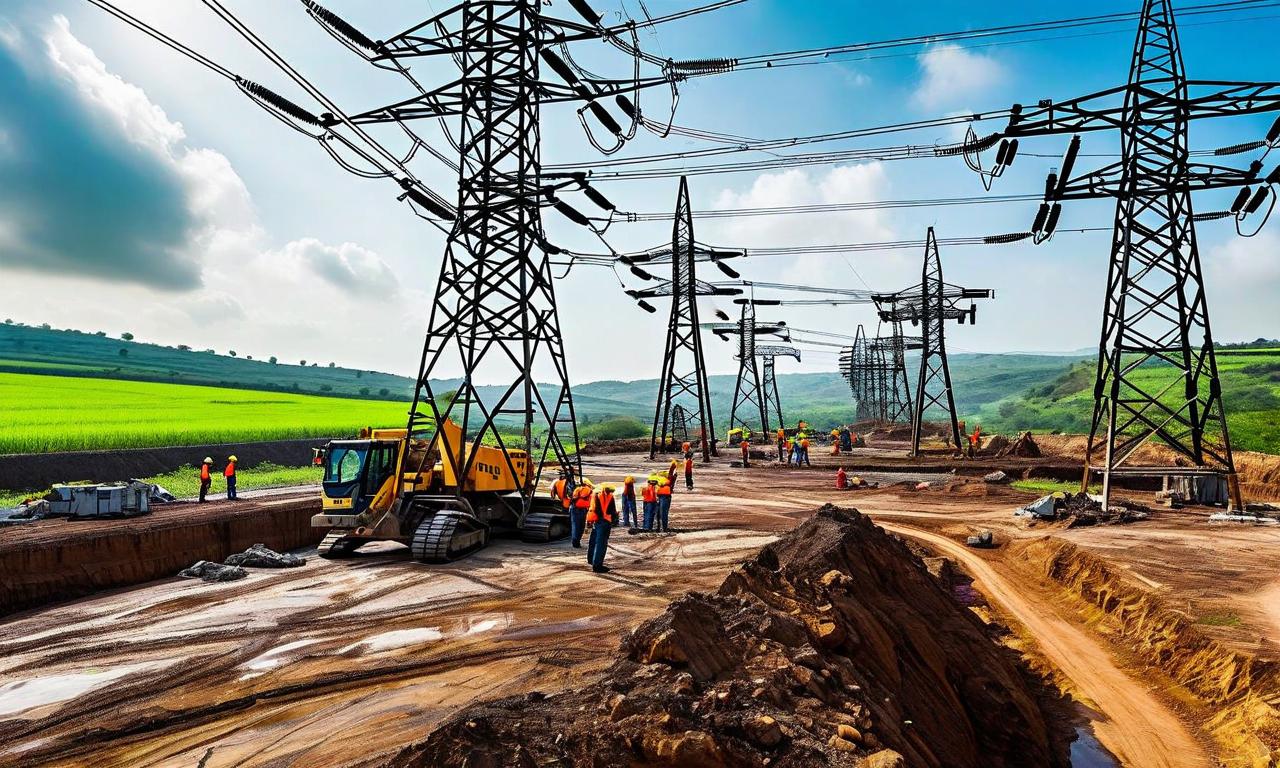India's Renewable Energy Sector Surges: Key Growth Drivers and Future Plans Unveiled
India's renewable energy capacity has grown from 35 GW in 2014 to 197 GW. Key growth drivers include large hybrid projects, offshore wind, pumped hydro storage, distributed solar initiatives, the National Green Hydrogen Mission, and the Green Energy Corridor Phase III. Over 40 GW of projects are in advanced stages, with 5.6 GW and 3.5 GW bids issued by central and state agencies respectively. The government plans a ₹2.4 lakh crore investment to support 500 GW capacity, aiming to increase inter-regional transmission capacity from 120 GW to 168 GW by 2032. Recent regulatory changes by CERC include time-segmented access for solar and non-solar hours.

*this image is generated using AI for illustrative purposes only.
India's renewable energy sector is experiencing a remarkable transformation, with capacity skyrocketing from under 35 GW in 2014 to an impressive 197 GW today. The Ministry of New and Renewable Energy has outlined several key growth drivers that are set to propel the sector even further.
Major Growth Drivers
Large Hybrid and Round-the-Clock Projects: Significant developments are underway in Rajasthan, Gujarat, and Karnataka.
Offshore Wind and Pumped Hydro Storage: These technologies are gaining traction as part of India's diversified renewable energy portfolio.
Distributed Solar Initiatives: Programs like PM Suryaghar and PM KUSUM are promoting widespread adoption of solar energy.
National Green Hydrogen Mission: This initiative aims to position India as a global leader in green hydrogen production and utilization.
Green Energy Corridor Phase III: This project focuses on integrating renewable energy into the national grid.
Current Progress and Future Outlook
- Over 40 GW of awarded renewable projects are in advanced stages of securing power purchase agreements and transmission connectivity.
- Central Renewable Energy Implementing Agencies have issued bids for 5.6 GW.
- State agencies have bid for an additional 3.5 GW.
- Commercial and industrial consumers are expected to contribute nearly 6 GW of renewable capacity.
Despite global supply-chain disruptions and financing challenges, India continues to add 15-25 GW of new renewable capacity annually.
Transmission Infrastructure Development
The government is implementing a comprehensive plan to support the growing renewable energy sector:
| Aspect | Details |
|---|---|
| Investment | ₹2.4 lakh crore |
| Capacity Goal | 500 GW |
| Current Inter-regional Transmission Capacity | 120 GW |
| Projected Capacity by 2027 | 143 GW |
| Projected Capacity by 2032 | 168 GW |
Recent Regulatory Changes
The Central Electricity Regulatory Commission (CERC) has introduced amendments to the General Network Access Regulations. These changes include time-segmented access for solar and non-solar hours, aimed at optimizing grid utilization.
India's renewable energy sector is clearly on an upward trajectory, with a multi-faceted approach encompassing various technologies, regulatory reforms, and infrastructure development. This comprehensive strategy positions India as a significant player in the global transition to clean energy.





























